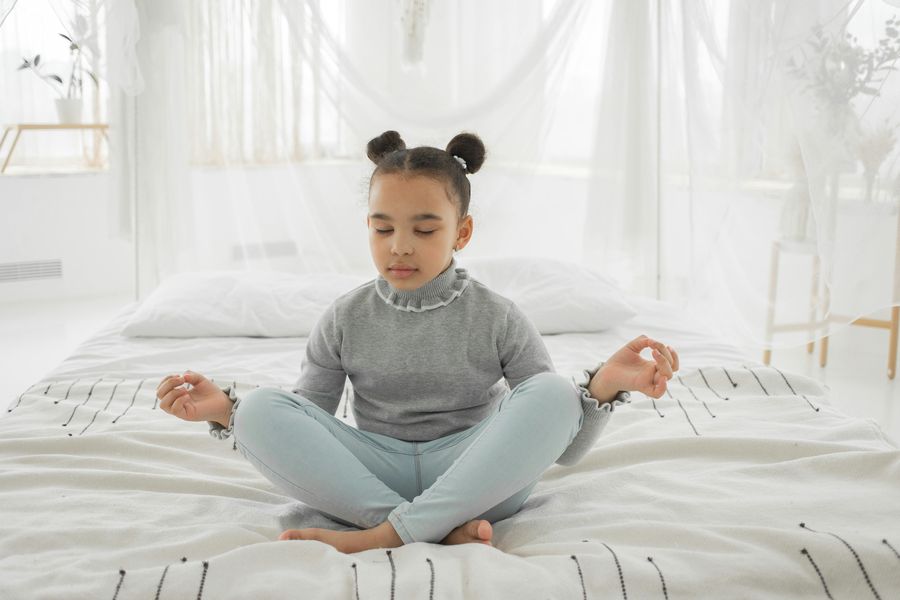The Power of Eye Contact
Have you ever felt uncomfortable making eye contact with someone? Do you find yourself looking away when someone tries to connect with you through their gaze?
If so, you are not alone. Many people experience eye contact anxiety, a feeling of nervousness or shyness when engaging in eye contact with others.
But did you know that eye contact is a powerful tool that can greatly benefit your relationships and overall wellbeing?
In this article, we will discuss the importance of eye contact in our daily lives, its benefits, disadvantages, and strategies on how to overcome eye contact anxiety.
We hope that by the end of this article, you will have a deeper understanding of how eye contact can help improve your communication skills, increase your confidence and self-worth, and strengthen your relationships with others. What is Eye Contact Anxiety?
Eye contact anxiety refers to the feeling of discomfort, nervousness, or shyness when making or sustaining eye contact with another person. This anxiety is often caused by mental health challenges, such as social anxiety disorder or autism, but it can also stem from a lack of self-confidence or poor communication skills.
When we feel anxious in social situations, our bodies may respond with symptoms like sweating, shaking, or increased heart rate, which can make us even more uncomfortable with making eye contact.
Overcoming Eye Contact Anxiety in Relationships
Open Communication
One way to overcome eye contact anxiety in relationships is through open communication with your partner or friend. Let them know how you feel and why eye contact makes you uncomfortable.
This will help you both understand each other’s needs and find ways to make eye contact feel less stressful.
Deep Breathing Exercises
Breathing exercises can also help alleviate eye contact anxiety. Taking deep breaths, inhaling slowly through your nose, and exhaling through your mouth can help calm your body and decrease any physical symptoms of anxiety.
Avoiding Staring
Avoiding staring can also help ease your eye contact anxiety. Making eye contact doesn’t mean you have to stare at the person for an extended period.
Instead, try looking at their face for a moment or two, then look away briefly before looking back again.
Starting with One Person
It can be challenging to make eye contact with a large group of people. Instead, start with one person and maintain eye contact for a few seconds, then switch to another person.
Gradually increase the number of people you make eye contact with.
Remaining Present in the Moment
Lastly, remain present in the moment. When you’re engaging in conversation and making eye contact with someone, make an effort to focus on the conversation instead of your anxiety.
Remind yourself that making eye contact is natural and a crucial part of human interaction.
The Importance of Eye Contact
Words and Body Language
Eye contact is a powerful means of communication. When we make eye contact with someone, we demonstrate that we are actively listening, present in the moment, and respectful of the other person.
It shows that we are not only speaking with our words, but also with our body language. Observing the body language of others along with their words can provide us with a more complete understanding of what they are communicating to us.
Benefits of Eye Contact
Confidence and Self-Worth
Making and sustaining eye contact can increase your confidence and self-worth. When we make eye contact with someone, we convey a sense of authority and assertiveness, indicating that we are confident in ourselves and our abilities.
Listening
Eye contact is also a critical element of active listening. When we look someone in the eye, we demonstrate that we care about what they are saying and are actively engaged in the conversation.
This can help build trust and strengthen our relationships with others.
Persuasion
Making eye contact can also be a powerful tool in persuasion. When we maintain eye contact with someone, we can convey our conviction and passion, and make them more likely to believe what we are saying.
Respect
Eye contact is a sign of respect in many cultures. In some societies, a lack of eye contact can be perceived as disrespectful and untrustworthy.
By making eye contact with others, we show that we are respectful and attentive towards them.
Disadvantages of Lack of Eye Contact
Disassociation
A lack of eye contact can cause disassociation and discomfort. When we don’t look at the person we’re talking to, it can be challenging to establish a connection with them, which can ultimately lead to a lack of trust and relationship-building.
In conclusion, making and maintaining eye contact is a powerful tool that can significantly benefit our relationships and overall wellbeing. It can increase our confidence and self-worth, enhance our communication skills, and strengthen our relationships with others.
If you experience eye contact anxiety, remember to practice deep breathing exercises, avoid staring, start with one person, communicate openly, and remain present in the moment. By following these tips, you can overcome your anxiety and reap the benefits of making eye contact with others.
Strategies for Effective Eye Contact
Eye contact is a crucial aspect of nonverbal communication that is essential in building connections and establishing trust with others. However, not all eye contact is created equal.
In this section, we’ll explore techniques that can optimize the effectiveness of your eye contact and boost your communication skills.
Non-Staring Techniques
One common issue with eye contact is staring. Staring can make people feel uncomfortable, and it’s not an effective way to build a connection.
Fortunately, there are non-staring techniques that you can use to make eye contact more comfortable and natural. One technique is to focus on a particular area, such as the bridge of the nose or the forehead.
This technique allows you to make eye contact without looking directly into the other person’s eyes, which can be less intimidating. Another technique is to use the percentage rule, which involves dividing your gaze between three areas: the eyes, the mouth, and the forehead.
This technique allows for a more relaxed and natural form of eye contact. The triangular focus technique can also be effective for those who experience anxiety with prolonged eye contact.
It involves focusing on one eye for a few seconds, then moving to the other eye, and then down to the person’s mouth, forming a triangle. Lastly, slow gaze movements can help build a connection with the person you are speaking with.
Make sure to move your eyes slowly and smoothly from one area to another to avoid staring.
Communication and Expression through Eye Contact
Eye contact can be a powerful means of communication that can help to convey your message more effectively. When making eye contact, try to be expressive and animate.
Show enthusiasm for what the other person is saying and express yourself with a smile. This can help to build rapport and show that you are engaged in the conversation.
Active listening is another vital component of effective eye contact. Make sure to maintain eye contact throughout the conversation, and avoid distractions such as fidgeting or looking around the room.
By demonstrating active listening, you are showing the person that you care about what they are saying, and that you are invested in the conversation.
Dating and Eye Contact
Eye contact is often a crucial aspect of romantic relationships. In fact, research has shown that maintaining eye contact can increase the level of attraction and connection between two people.
One effective way to use eye contact while dating is to catch the other person’s eye and hold it for three to four seconds. If they return the gaze, it is an indication that they are interested.
Another technique is to smile while maintaining eye contact. By using a genuine smile and meeting the other person’s eyes, you’re indicating your interest in them and your willingness to connect on a deeper level.
When you’re on a date, make sure to maintain eye contact with your partner during the conversation. This not only shows that you’re interested in what they’re saying, but it can also help establish a sense of intimacy.
Coping with Anxiety and Mental Health Challenges
Unfortunately, anxiety and mental health challenges can make eye contact more difficult. Mental health challenges such as PTSD, psychopathy, and neuroticism can make eye contact more challenging.
For people with autism, eye contact can be overwhelming, and they may struggle with nonverbal communication. However, there are strategies that can help you cope with these challenges.
Seeking professional help is one of the most effective ways to cope with anxiety and mental health challenges. A mental health provider can help you develop strategies to deal with your anxiety and can help you work through your underlying mental health issues.
If you’re experiencing anxiety around eye contact, it may be helpful to practice gradually increasing your eye contact in social settings. Starting with people you are comfortable with can help you practice before moving on to more challenging situations.
For people with autism, social stories and role-playing exercises can help to make eye contact more manageable. These exercises are designed to help people with autism understand social cues and body language.
Conclusion
Eye contact is a powerful tool that can significantly impact your communication skills, self-worth, and relationships. By using non-staring techniques, expressing yourself through eye contact, and utilizing eye contact in romantic relationships, you can improve your communication skills and build stronger connections with others.
If you’re experiencing anxiety or mental health challenges that make eye contact difficult, consider seeking professional help or practicing in low-pressure, comfortable settings. In conclusion, eye contact is an essential aspect of communication that can significantly impact our relationships, confidence, and overall wellbeing.
By overcoming eye contact anxiety, using non-staring techniques, expressing yourself through eye contact, utilizing eye contact in romantic relationships, and coping with anxiety and mental health challenges, you can improve your communication skills and build stronger connections with others. Eye contact is a powerful tool that can help you convey your message more effectively, demonstrate active listening, and establish intimacy.
By acknowledging the importance of eye contact and practicing effective eye contact strategies, you can improve your communication skills, boost your self-worth and confidence, and build healthier relationships.



